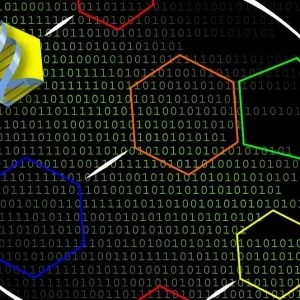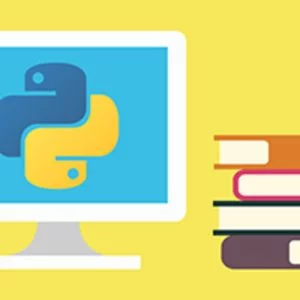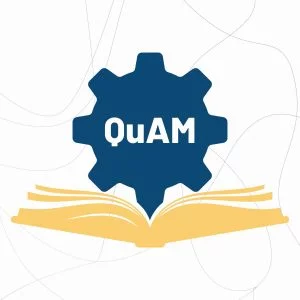
Add to wishlistAdded to wishlistRemoved from wishlist 0
Add to compare8.3/10
(Our Score)
Product is rated as #176 in category Machine Learning
Become an expert in neural networks, and learn to implement them using the deep learning framework PyTorch. Build convolutional networks for image recognition, recurrent networks for sequence generation, generative adversarial networks for image generation, and learn how to deploy models accessible from a website.
Instructor Details
Votes: 0
Courses : 1
Specification: Deep Learning Online Course
|
7 reviews for Deep Learning Online Course
5.0 out of 5
★★★★★
★★★★★
7
★★★★★
0
★★★★★
0
★★★★★
0
★★★★★
0
Write a review
Show all
Most Helpful
Highest Rating
Lowest Rating
Add a review Cancel reply
This site uses Akismet to reduce spam. Learn how your comment data is processed.

| Price | $716 |
|---|---|
| Provider | |
| Duration | 192 hours |
| Year | 2020 |
| Level | Intermediate |
| Language | English |
| Certificate | Yes |

Deep Learning Online Course
$716.00






Vyom S. –
I’ve waited until graduating to write this review. For me the journey has been fun and engaging. As an undergrad student I was surprised to find so many people, from very different walks of life, taking the course alongside me. This in itself is a testament to how great the program actually is. They’ve managed to cover almost the entire breadth of topics related to deep learning and neural networks. Earlier weeks focus on building up the fundamentals. Coming up to the last few weeks, I was already pretty comfortable with the topics. I especially loved the lessons they’ve built in collaboration with Ian Goodfellow and Andrew Trask. Initially almost all of the Siraj’s content was horribly frustrating and I was tempted to leave them out. Being a total beginner with neural networks, most of the time. I couldn’t make heads or tails about what the guy was talking about. But after being halfway through the course, the barrier was lifted. Siraj’s video lectures are now one of the most interesting things about this course. As he would say it’s dope!! Most of my time apart from the lessons was spent following up on the links, blogs, articles and videos that the course refers in between the lessons. Before taking this course I was admittedly a novice. I had taken a few online courses related to data science and machine learning but I was missing a lot. Taking this course allowed me to write a winning proposal for 2017’s Google Summer of Code with CERN. I look forward to increasing my skills further by practising and exploration.
Peter L. –
This is probably the most approachable way to get into deep learning I have found thus far. The course covers a lot of interesting subjects, with (usually) good explanatory videos and walkthroughs. These always feel fresh and get you motivated for the subjects you are about to learn. As a bonus, they have gotten a few known names to present individual subjects. As an example, the introduction to GANs is done by none other than the inventor himself, which is a cool bonus. There is a lot of great material here, and while some of it feels a bit rushed or oversimplified at times, they do reference more material for those that want to dive deeper into the learning B). (That being said, you will definitely have to get your hands dirty at times as well.) The main value here is in the projects and introductory notebooks. Here, you’ll get a lot of hands on experience writing code, and you will definitely feel like you’ve come a long way after finishing them all. Best of all, you’ll have working code that you can tweak and use for your own projects afterwards, and perhaps a ton of ideas as well. All in all, money well spent, at least in my case.
Nohemy V. –
I couldn’t be more happy with my experience. Udacity has changed my life, and I expect more changes as I will pursue another Nanodegree. I must confess this program has been extremely challenging. I have had to overcome certain aspects of myself, fears and insecurities, to be able to finalize this Nanodegree satisfactorily. Thus, in some way, I could say that this experience has helped me to become a better person, making me release a better version of myself. In order to be able to complete it, I have had to change the way I used to study. I have had to question many aspects of myself, and to reengineer on some points of my learning process. After all this process, I can say that my mindset has definitely changed. On the other hand, it wouldn’t be for me so easy to start a new career path in AI, or at least, not so quickly. I’m extremely happy because I feel great doing what I’m doing and I know why, and I can feel that this is something that I want to focus on, and people around me are so curious about the changes in me, that I’m sharing with them most of my personal and professional insights. I feel really grateful.
Sebastian P. –
In general I think the course is quite good. The feedback is overall very good. I had no experience with Python prior to starting. If you are familiar with other programming languages then it won’t be an issue, especially if you know Matlab or R. The slack channels are helpful. However, there is a lot of inconsistencies in teaching style because there are so many presenters (not saying it is bad). I have found some sections a bit rushed, whilst some others in a lot of detail, and some go over the bare basics before even starting the content to cement the key points. Everyone has a different learning style, I preferred the guided tutorials and lessons that had graphics / diagrams to help grasp content. The assessment for the course is good, you have to apply what you learn in the projects, this is a great way to make sure you understand all the content. One negative is that you need a decent PC if you wanna do the assignments offline, I did have some issues with my AWS account.
Karim B. –
I really enjoyed learning new things, especially models I did not know about before this Nano–Degree. The projects are really, really fun, even though they were a direct application of the lectures. I would have loved to learn more about the maths behind CNN, RNN and GANs. Siraj’s video were helpful (and fun to watch) to give a first idea of the different techniques. The resources given with each videos are a good way to get deeper knowledge of the topics at hand, especially for RNNs (at first, LSTM and GRU are quite scary). Something that could be improved would be the reinforcement learning sections (very high level, no related project…). The work done in the MLND on reinforcement learning is somehow better. Lastly, Big Up for the reviewers. They always provide enlightening advices and asks challenging questions to improve the results of your project. Well, in short, I had a great time learning !
Harshit A. –
It’s a great course with amazing course content. The projects seemed like a good way to get introduced to programming neural network architectures across various domains like cnns, rnns, gans, etc. Apart from that the projects and course material are well structured and the discussions on the slack channel, help, and suggestions in the forums and by mentors was also worthwhile and useful. A slight modification that I think can be brought in the projects. A lot of projects had pre–written codes which are important for beginners like me, but these can also make the projects slightly easier to tackle. You may want to skip providing such codes (like in preprocessing steps) to make us spend some time in that too. Overall it is an awesome, super helpful course and I’m really satisfied with it.
Jacek A. –
I lost a LOT of time in the beginning as I had overestimated the amount of energy I had after regular work. Then the Winter Holidays trip to EU didn’t help with the momentum either. Now I am trying to catch up with the course. I feel I am learning a lot about ML but also the various tools like Anaconda, Jupyter, etc. I had never been a Python programmer; instead I’ve used C, C++, Java, Scala. I am open to Python but don’t enjoy its lack of explicit type declaration. That cost me some lost time on the current project. Instead of doing np.dot(x, y), i wrote x.dot(y) thinking that the same function would be invoked. Python did not protest; MSE function got argument of a wrong type, but still computed something w/o protesting. Eventually, I figured out that the data types were wrong. Lesson learned!